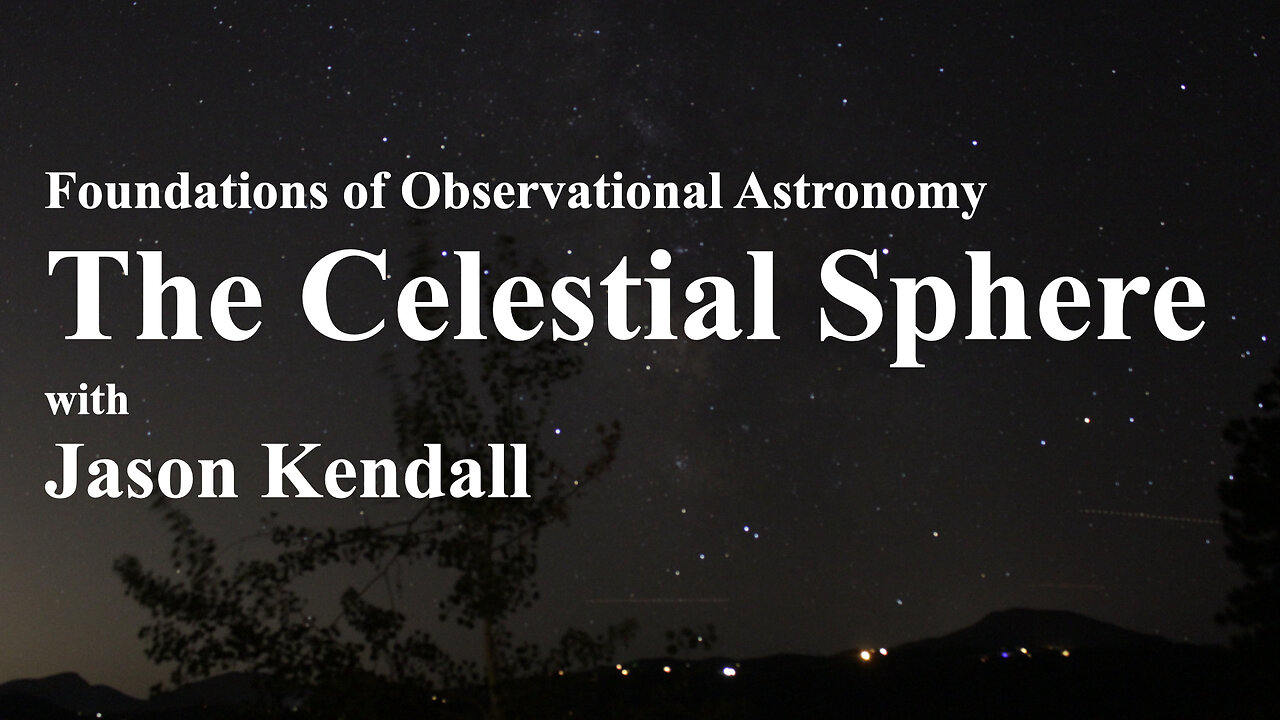Premium Only Content

Journey Through the Celestial Sphere: Exploring Stars and Simulations!
In this session, I undertake an exploration of the celestial sphere utilizing the SkySafari simulator. Despite its status as a paid application, SkySafari facilitates comprehensive views of the entire sky, allowing for the simulation of orbital paths around Earth. The latitude and longitude lines on our planet extend into the cosmos as declination and right ascension lines, thereby establishing the equatorial coordinate system. The celestial equator serves as the foundational point for declination, while the vernal equinox functions as the prime meridian’s counterpart in the realm of astronomy, representing the zero point for right ascension. Right ascension is quantified in hours, minutes, and seconds, with each hour corresponding to a 15-degree increment, thereby aiding in the tracking of celestial objects. Through the use of SkySafari, we scrutinize the declination and right ascension of various stars, such as Markab, to illustrate how these coordinates facilitate the localization of celestial bodies. The North Celestial Pole, located near Polaris, and the South Celestial Pole are significant points where right ascension lines converge. From our vantage point, the sky appears to exhibit motion due to the rotation of the Earth. Additionally, I elaborate on the ecliptic, which represents the sun’s apparent trajectory, and the proximity of planets to this path. By examining examples, we observe how the celestial sphere manifests from diverse latitudinal perspectives, including those of the North Pole, equator, and South Pole. Such observations elucidate how stars rise and set relative to the observer’s geographical location. In conclusion, we turn our attention to Stellarium, another software designed for sky simulation, which provides an Earth-bound perspective of the celestial sphere. The equatorial coordinate system remains steadfast, delineating the sky into 88 distinct regions defined by constellations and their respective boundaries.
Stellarium: http://www.stellarium.org Sky Safari: https://skysafariastronomy.com
-
 1:20:42
1:20:42
The Connect: With Johnny Mitchell
6 days ago $13.66 earnedThe Truth Behind The U.S. Invasion Of Venezuela: Ed Calderon Exposes American Regime Change Secrets
39.7K25 -
 2:10:18
2:10:18
FreshandFit
7 hours agoAfter Hours w/ Girls
132K36 -
 2:06:29
2:06:29
TimcastIRL
13 hours agoAirlines Cancel Over 700 Flights, Travel APOCALYPSE Is Now, Trump Says END FILIBUSTER | Timcast IRL
236K115 -
 9:02:44
9:02:44
SpartakusLIVE
17 hours agoTOXIC Solos on ARC Raiders || Friday Night HYPE - WZ or Redsec Later?
78.6K2 -
 2:15:42
2:15:42
TheSaltyCracker
10 hours agoWoke is DEAD ReeEEStream 11-07-25
126K220 -
 1:29:13
1:29:13
Sarah Westall
9 hours agoThe City of London: Infiltration, Intimidation & Centralized Power w/ Mike Harris
51.5K15 -
 10:14:18
10:14:18
Dr Disrespect
19 hours ago🔴LIVE - DR DISRESPECT - ARC RAIDERS - AGAINST ALL DANGER
202K26 -
 32:09
32:09
ThisIsDeLaCruz
1 day ago $6.52 earnedFalling In Reverse: Christian Thompson’s Stage Tech Revealed
45K8 -
 4:41:02
4:41:02
SynthTrax & DJ Cheezus Livestreams
1 day agoFriday Night Synthwave 80s 90s Electronica and more DJ MIX Livestream 80s Night / Late Night Nostalgia
52.4K5 -
 4:05:52
4:05:52
Nerdrotic
14 hours ago $27.41 earnedHollywood REGRET | Disney's Predator | The Feminist Avengers - Friday Night Tights 379
79.9K19